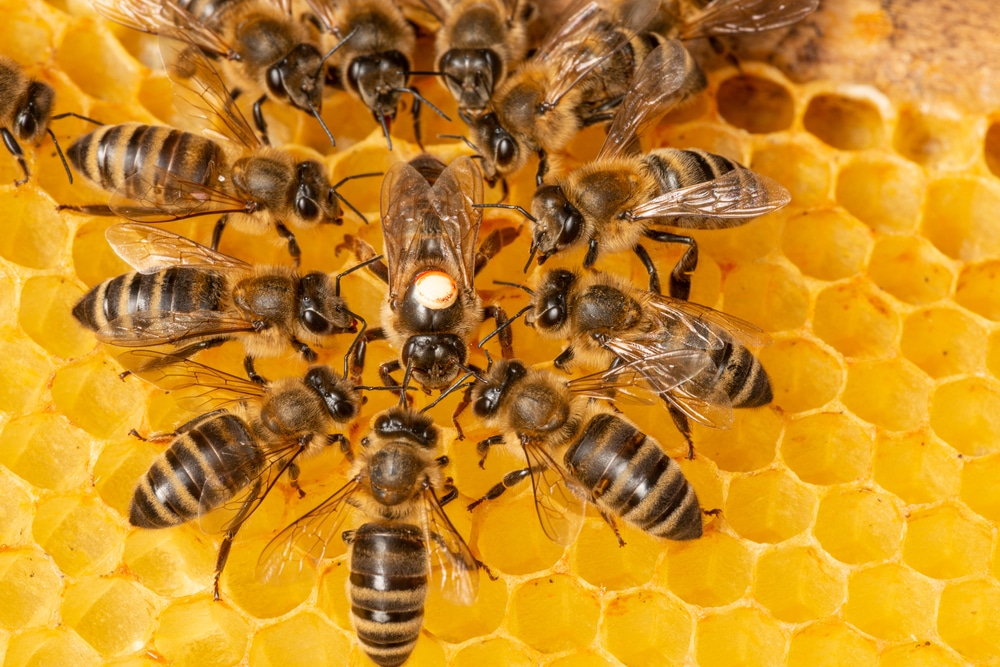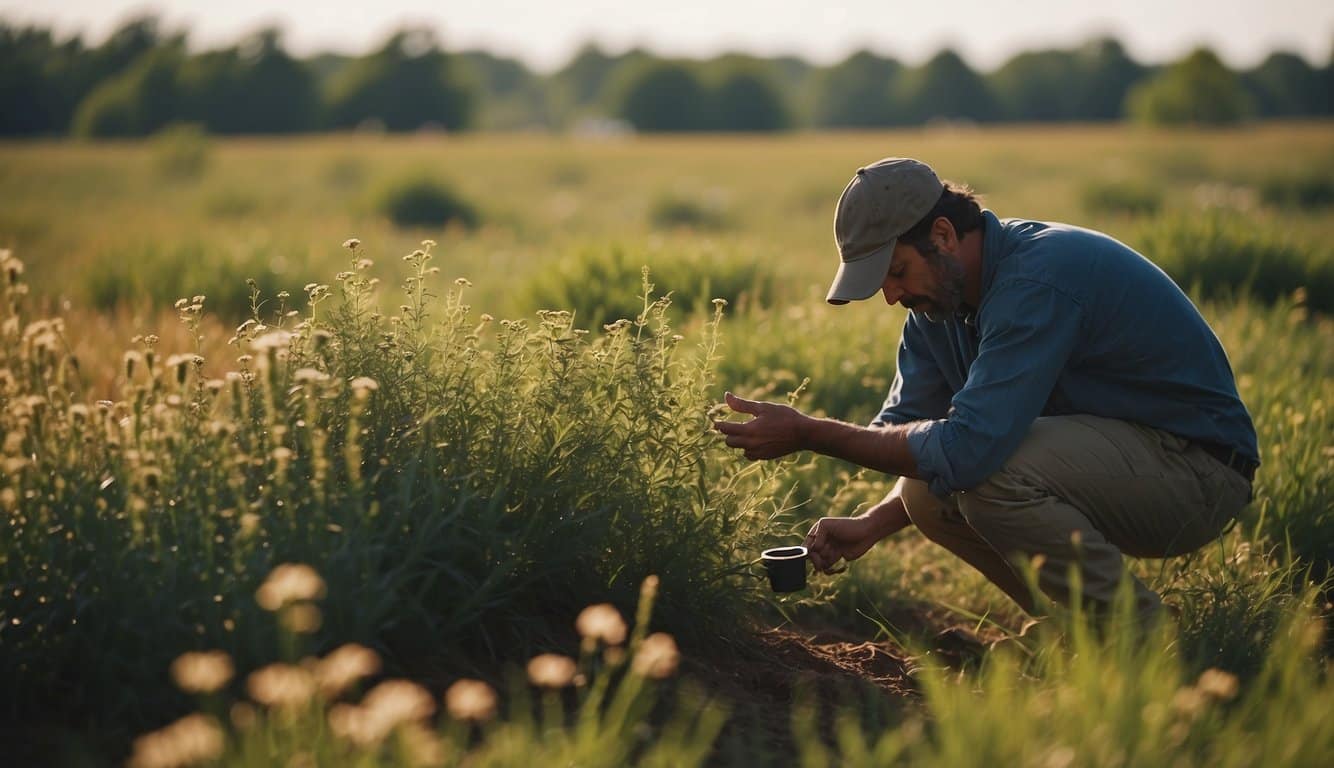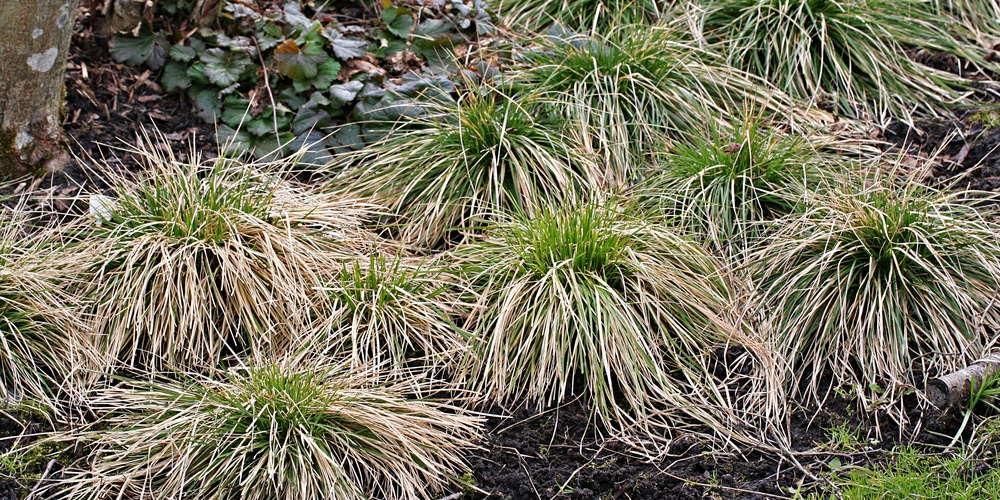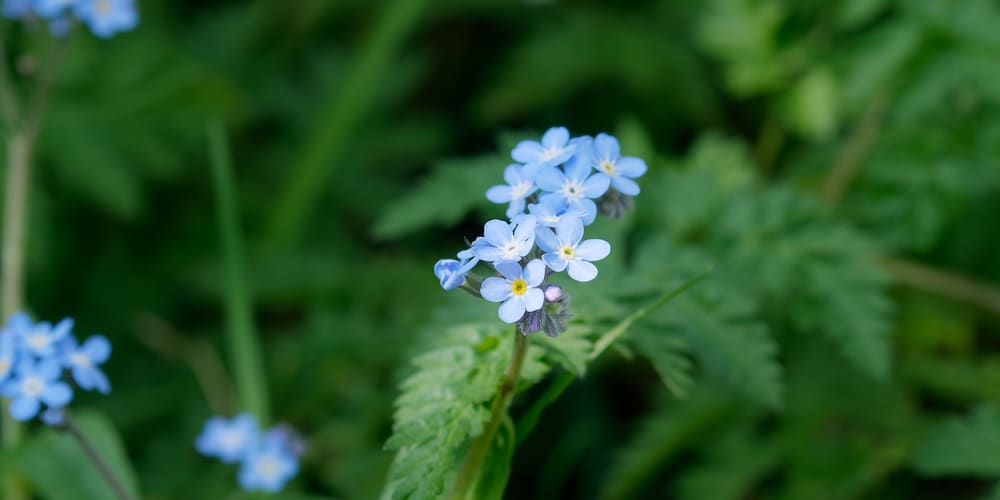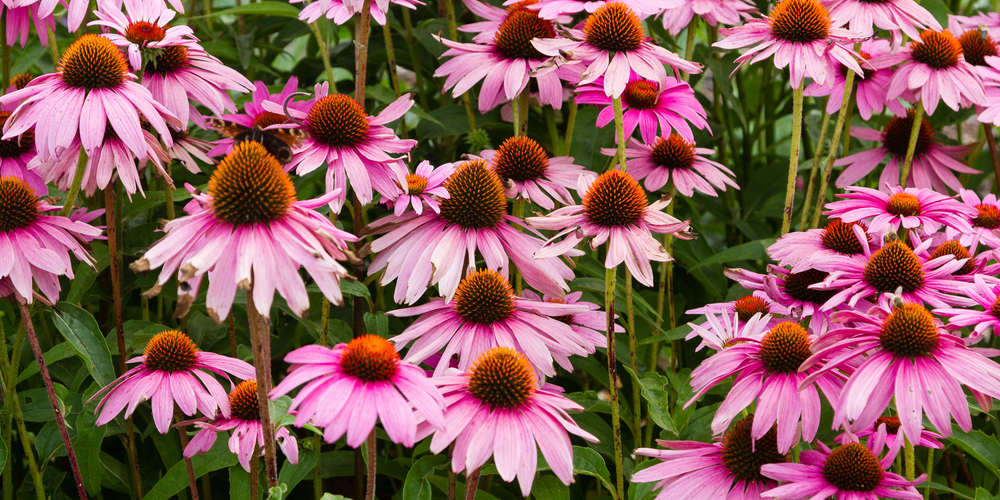Benefits of Native Prairie Plants in Illinois
When you choose native prairie plants for your Illinois landscape, you’re supporting a rich and sustainable ecosystem.
Not only do these plants offer a natural beauty that resonates with the heritage of the prairie state, but they bring a host of environmental benefits.
Enhanced Biodiversity
Native plants provide critical habitats for a variety of wildlife. Birds and grassland animals thrive among these species, which are perfectly adapted to the local climate and soil conditions.
- Pollinator Support:
Many native plants, like the indispensable milkweed, are vital for the survival of native insects, including bees and butterflies. - Low Maintenance:
Since these plants are adapted to the local environment, they generally require less water and fewer pesticides than their non-native counterparts. - Invasive Species Control:
Incorporating native species can reduce the spread of exotic invaders that might otherwise take over your garden. - Year-Round Interest:
Prairies have a dynamic life cycle, offering changing textures and colors throughout the seasons.
Attractiveness to Wildlife
By creating a landscape that uses prairie plants, you provide a refuge for wildlife. Native flora forms the cornerstone of food webs, offering seeds, nuts, and berries that are often not found in other ornamental garden selections.
Sustainability
These resilient plants are accustomed to Illinois’ varied weather patterns and can withstand droughts, floods, and other extreme weather events better than non-natives, reducing your need for intervention.
Selecting Native Prairie Plants
To successfully incorporate native prairie plants into your Illinois landscape, it is essential to consider the native ecosystem, soil type, and plant behavior throughout the seasons.
By Ecosystem Type
When choosing plants, it is crucial to match them to the ecosystem you’re looking to replicate.
Prairie ecosystems, for example, include a mix of grasses and forbs (flowering plants).
For a prairie garden edge, Prairie Dropseed (Sporobolus heterolepis) could serve as a fine-textured border.
In contrast, an Illinois savanna or woodland area would be more suited for shade-tolerant species.
For Various Soil Conditions
Native plants have adapted to Illinois soils, ranging from clay to sandy loams.
Prairie Dropseed thrives in a variety of soils, including clay.
When planting, consider your location’s soil moisture and drainage:
- Well-drained soils: Suitable for plants like Little Bluestem (Schizachyrium scoparium)
- Moist soils: Ideal for New England Aster (Symphyotrichum novae-angliae)
With Seasonal Considerations
Native prairie plants offer year-round interest, but it’s important to plan for how they will look throughout the seasons.
Plant a variety of species to ensure continuous bloom and foliage interest:
- Spring: Wild Lupine (Lupinus perennis) provides early blooms.
- Summer: Purple Coneflower (Echinacea purpurea) offers vibrant summer color.
- Fall: The foliage of Prairie Dropseed turns a golden hue, and its airy flower heads add texture.
Design Principles for Prairie Landscaping
When landscaping with native prairie plants in Illinois, your approach should be thoughtful and strategic to ensure ecosystem compatibility and aesthetic beauty. Here are key principles to guide you:
Plant Diversity: A mix of grasses, wildflowers, and sedges creates a resilient and visually appealing landscape. Embrace a variety of species to enhance ecological balance.
- Grasses: These form the foundation of prairie landscaping. Opt for a balance of 33% to 50% grasses in your design.
- Wildflowers & Sedges: Complement grasses with a selection of flowers and sedges, from vibrant blooms to textured foliage.
Seeding Rates: Adjust seeding rates according to the species and your landscape’s size.
| Plant Type | PLS lbs. per acre (typical) |
|---|---|
| Grasses | 4 to 10 |
| Flowers | 1 to 5 |
Layering & Height: Arrange plants by height for visual interest and accessibility. Taller species can be placed at the back of landscape features, with shorter ones at the forefront.
Cohesion and Flow: Design your prairie landscape considering the visual flow. Group similar species or colors for a cohesive look while allowing for naturalistic dispersion.
Seasonal Planning: Select plants that provide year-round interest. Consider bloom times and fall colors to maintain an attractive landscape throughout the seasons.
Planting and Maintenance Techniques
When introducing native prairie plants to your Illinois landscape, consider both the planting strategy and the ongoing maintenance for ensuring a thriving garden.
Selecting Your Planting Site:
- Sunlight: Most prairie plants require full sun. Assess the amount of daily sunlight to match plants to the right location.
- Soil Conditions: Prairie plants are adaptable but ensure your soil type meets the plant’s needs—whether it be loam, sand, clay, or gravel.
Preparing the Soil:
- Remove existing vegetation to minimize competition.
- Till the soil lightly, if compacted, to improve root penetration.
- Avoid adding fertilizers; native plants thrive in native soils.
Planting:
- Spacing: Provide enough space between plants to allow for natural growth. Prairie dropseed, for instance, may spread 2 to 3 feet.
- Watering: Water plants initially after planting to establish roots. Once established, native prairie plants generally require less watering.
Care and Maintenance:
- Weeding: Keep the area free from invasive species that can outcompete native flora.
- Pruning: Cut back plants in late winter to stimulate new growth in spring.
- Monitoring: Regularly check for signs of disease or pest issues, although native plants typically have fewer problems with pests and diseases.
| Maintenance Task | Frequency |
|---|---|
| Watering | As needed, focusing on the first season after planting |
| Weeding | Regularly, especially during the growing season |
| Pruning | Annually, at the end of winter before new growth begins |
Native Prairie Plant Species Profiles
When choosing plants for your Illinois landscape, look for species that thrive naturally in the prairie environment.
Echinacea purpurea (Purple Coneflower) is not only beautiful but also attracts pollinators with its iconic purple blooms.
Rudbeckia hirta (Black-eyed Susan), with its bright yellow petals circling a dark brown center, provides a stunning visual contrast and is highly adaptable to different soil types.
For those interested in creating a textured landscape:
- Panicum virgatum (Switchgrass): This grass offers striking vertical lines and a soft, flowing texture. It also serves as an excellent border with its height and robust form.
- Schizachyrium scoparium (Little Bluestem): Appreciated for its blue-green summer foliage that turns a rich, coppery hue in the fall, it’s an excellent choice for multi-season interest.
Some plants also play crucial roles in supporting wildlife:
| Plant | Wildlife Supported |
|---|---|
| Asclepias tuberosa (*Butterfly Milkweed) | Monarch butterflies; essential for their lifecycle |
| Baptisia australis (Blue Wild Indigo) | Nectar source for bees; host plant for several butterfly species |
Remember to plant Aster novae-angliae (New England Aster) for a splash of color in the fall, attracting a myriad of insects, including bees and butterflies, before winter sets in.
Frequently Asked Questions
What are the best tall native grasses suitable for landscaping in Illinois?
Tall native grasses like Big bluestem (Andropogon gerardii) can reach heights up to 8 feet. Indian grass (Sorghastrum nutans) is another prime choice for adding vertical interest to your Illinois landscape.
Which short native grasses are well-suited for Illinois gardens?
Prairie dropseed (Sporobolus heterolepis) is an excellent short grass that reaches 2 to 3 feet in height. It is tolerant of various soil conditions including clay, making it perfect for diverse Illinois gardens.
How can I establish a native grass lawn in Illinois?
To establish a native grass lawn, begin by removing existing vegetation and selecting appropriate seed mixes or plugs. Sow seeds in the fall or spring. Be patient, as it can take several years for a native grass lawn to fully establish.
How do I identify different Illinois prairie grasses?
Identifying Illinois prairie grasses involves observing plant height, leaf shape, seed heads, and flowering time. Field guides specific to Midwestern prairie species can serve as invaluable resources for accurate identification.
Where can I find native grass seeds for an Illinois landscape?
Native grass seeds can be sourced from local nurseries specialized in native plants, Illinois native plant societies, or online retailers that supply region-specific seed mixes for prairie restoration and landscaping.
What bushes are indigenous to Illinois and suitable for natural landscaping?
Bushes such as the New Jersey Tea (Ceanothus americanus) and the Black Chokeberry (Aronia melanocarpa) are indigenous to Illinois.
These hardy species offer attractive foliage and are adapted to local climates and soils.
